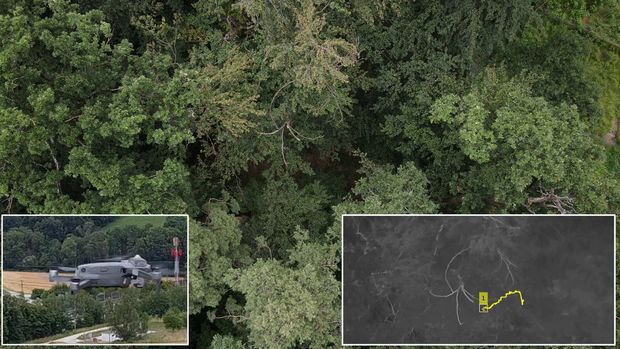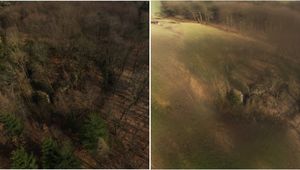Earlier this year, the JKU published a report detailing the world's first system to track people in dense forest cover in real-time. The system is now progressing to the next stage.

Normal, commercially available drones can now use the system. Initially, using the system required a special drone equipped with a ten-meter boom containing ten individually mounted cameras. The imaging technique, Airborne Optical Sectioning (AOS), was developed at the JKU (Institute of Computer Graphics; department head: Univ.Prof. Oliver Bimber) and facilitates the removal of occlusions in individual images caused by foliage in real-time. As a result, the system can visibly detect moving objects on the forest floor. The next step is to develop the system for use in commercially available drones, meaning special drones would no longer be required.
The concept behind the new method, Inverse Airborne Optical Sectioning (IAOS), originates in radar technology and involves computationally shifting and integrating the images captured by a hovering camera drone above the forest. The required image shift is derived from the object to be tracked on the forest floor, taking direction and speed of movement into account. However, as these motion parameters are unknown, JKU researchers have introduced a new method to estimate the parameters using the image data and despite the occlusion. The result is an occlusion-free image of the sought-after object (such as a missing person, wildlife, or a vehicle). The object can also be further pursued or tracked.
Potential applications include searching for missing individuals, tracking and counting game and wildlife, and terrain monitoring to, for example, protect critical infrastructure. In the future, AOS is also expected to be used to help fight forest fires. The advantages of detecting fire sources early - even before smoke becomes visible or a fire builds – could be crucially decisive. The researchers in Linz are also working on enhancing and extending so-called drone swarms, in which multiple drones conduct a search using a co-coordinated approach.
Pre-print for publication in Drones Journal: https://arxiv.org/abs/2207.13344, opens an external URL in a new window
Videos:
https://download.jku.at/org/7kM/8UM/Video2.mp4, opens an external URL in a new window
https://download.jku.at/org/7kM/8UM/Video3.mp4, opens an external URL in a new window







![[Translate to Englisch:]](/fileadmin/_processed_/a/5/csm_Kameradrohne_Credit_IGC_JKU_7bed724976.jpg)



